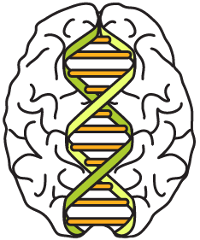Large scale imaging data sets are necessary to address complex questions regarding the relationship between brain and behavior. The Brain Genomics Superstruct Project Open Access Data Release exposes a carefully vetted collection of neuroimaging, behavior, cognitive, and personality data for over 1,500 human participants. Each neuroimaging data set includes one high-resolution Magnetic Resonance Imaging (MRI) acquisition and one or more resting-state functional MRI acquisitions. Each functional acquisition is accompanied by a fully-automated quality assessment and pre-computed brain morphometrics.
- Read the GSP Documentation -
Dataverse
Be sure to read though and accept the GSP Data Use Terms
Create an Dataverse Account here
Go to the GSP Dataverse page here and choose one of the study versions e.g., doi:10.7910/DVN/25833
Click on Request Access next to each restricted file
Wait for approval via email
Return to the GSP Dataverse page here and download your files
LONI Download (Extended release)
Navigate to the LONI GSP apply page here
Read the ATTENTION carefully and download the GSP Restricted Data Use Terms application
Accept the GSP Restricted Data Use Terms electronically
Sign and email, mail, or fax the GSP Restricted Data Use Terms application to the Harvard NRG
Once you have received the approval email, head back to the LONI GSP archive here
Navigate to the Advanced Search (beta) feature
Search for Pre-Processed images of type MRI or fMRI
Add the search results to a Collection
Navigate to the Data Collections tab and download all of the files in your Collection (requires Java plugin)
GSP on USB (dISCONTINUED)
You can order the neuroimaging, demographic, cognitive, and behavioral data for all 1570 subjects and 69 retest subjects on a single 128 GB USB drive. These drives are formatted to work across Mac OS X, Linux, and Windows.
Please complete the following Order Form.
PUBLICATIONS
Holmes, A.J., Hollinshead, M., O’Keefe, T.M., Petrov, V.I., Fariello, G.R., Wald, L.L., Fischl, B., Rosen, B.R., Mair, R.W., Roffman, J.L., Smoller, J.W., Buckner, R.L. (2015). Brain Genomics Superstruct Project initial data release with structural, functional, and behavioral measures. Scientific data, 2, 150031.
Yeo, B.T., Krienen, F.M., Sepulcre, J., Sabuncu, M.R, Lashkari, D., Hollinshead, M., Roffman, J.L., Smoller, J.W., Zollei, L., Polimeni, J.R., Fischl, B., Liu, H., Buckner, R.L. (2011) The organization of the human cerebral cortex estimated by intrinsic functional connectivity. Journal of Neurophysiology, 106(3): 1125-1165
Buckner, R.L., Krienen, F.M., Castellanos, A., Diaz, J.C., Yeo, B.T. (2011) The organization of the human cerebellum estimated by intrinsic functional connectivity. Journal of Neurophysiology, 106(5): 2322-2345
Choi, E.Y., Yeo, B.T.T., Buckner, R.L. (2012) The organization of the human striatum estimated by intrinsic functional connectivity. Journal of Neurophysiology, 108(8): 2242-2263
Van Dijk, K.R., Sabuncu, M.R., Buckner, R.L. (2012) The influence of head motion on intrinsic connectivity MRI. NeuroImage, 59(1): 431-438
Holmes, A.J., Lee, P.H., Hollinshead, M., Bakst, L., Roffman, J.L., Smoller, J.W., Buckner, R.L. (2012) Individual differences in amygdala-prefrontal anatomy link negative affect, impaired social functioning, and polygenetic depression risk. Journal of Neuroscience, 32(50): 18087-18100


